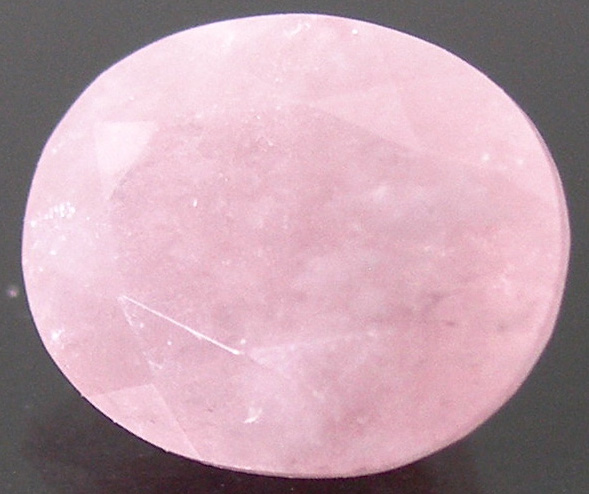Ussingite

Ussingite
(From Russia. Weight: 0.61 carats)
Image © supplied by Woodmansee* Gems
Apart from the commercially popular gemstones like diamonds, rubies, emeralds and sapphires a separate market has been emerging for rare gemstones which are sought after for their rarity rather than for use in jewelry. One such gemstone is the Ussingite. Gemstones of Ussingite are extremely rare and feature among the prized collectibles of gemstone experts and gemstone collectors.
Ussingite History & Etymology:
Ussingite was first discovered in 1915 and since then is considered to be grandfathered by the IMA. Ussingite was discovered by Niels Viggo Ussing, who was professor of mineralogy at the University of Copenhagen, Denmark. Ussingite is hence named after its discoverer.
Ussingite Occurrence:
The Ussingite mineral is quite rare and Ussingite are rarer. The Ussingite mineral is hence found in very few localities. Ussingite are found in namely three localities in the Kola Peninsula in Russia, Illimaussaq Complex in Southern Greenland and also in Mt St. Hilaire in Canada. Ussingite are generally found in the Illimaussaq Complex in Greenland. The crystals yielded in this locality are also of high gemstone quality and some of the largest crystals of Ussingite have been found here.
Ussingite Properties:
Ussingite is composed of sodium aluminum silicate hydroxide. The dominant presence of silicon in the composition of Ussingite classifies the Ussingite mineral as silicates mineral. Ussingite are hence related to the Sodalite group and belong to the Ussingite Series.
Ussingite displays triclinic and pinachoidal properties and Ussingite occurs as tabular crystalline masses in their natural forms. Ussingite however never occur as pseudocubic crystals. The crystalline masses of Ussingite are at least 1 cm in size. The nature of crystalline masses of Ussingite is usually fine grained and compact. Twinning in Ussingite is quite common.
The cleavages on Ussingite are perfect with irregular fracturing as well as uneven fracturing. The perfect cleavages with the varying fracturing make Ussingite quite brittle. However Ussingite are quite hard with a Moh’s hardness varying between 6 and 7. Ussingite are not quite dense with a density of approximately 2.4 g/cm3. Ussingite do not display properties of luminescence nor are they radioactive.
Ussingite crystals occur in various colors, notably in the colors of white, pale to dark violet, reddish violet and pink. Ussingite is usually transparent but due to inclusions some of the Ussingite crystals appear translucent. Ussingite also appear to have a vitreous luster which changes to a greasy shine on the edges of the crystals. Ussingite also have a pearly sheen on the cleavages. The Ussingite crystals have a refractive index which varies between 1.5 and 1.54. Ussingite also have a birefringence of approximately 0.035. Ussingite however do not show properties of dispersion or pleochroism.
Ussingite naturally occur in pegmatites which have alkali intrusions. The Ussingite mineral usually occurs as a secondary mineral in the pegmatites. The Ussingite mineral similarly also occurs in sodalite xenoliths. The stunningly beautiful gemstones of Ussingite are extremely sought after by gemstone collectors and gemstone experts who are willing to pay hundreds of dollars for a fraction of a carat.
Back to the Gemstones List home page - over 160 gemstones explored!
Please feel free to link to this page - copy / paste the text below: (click to select)
Privacy Policy | Cookie Policy | GDPR | About This Site / Terms

© gemstoneslist.com 2018


